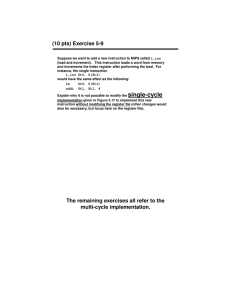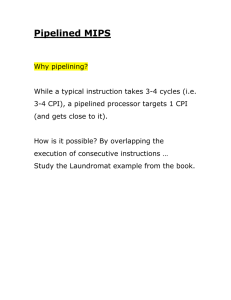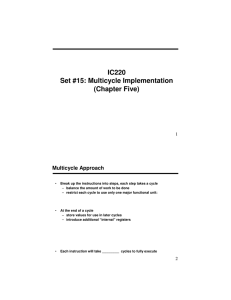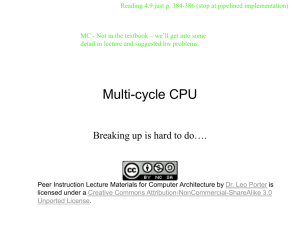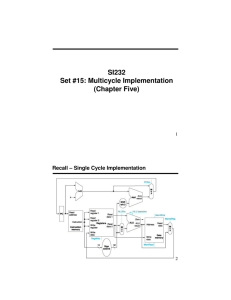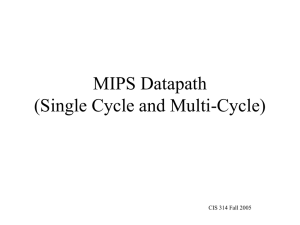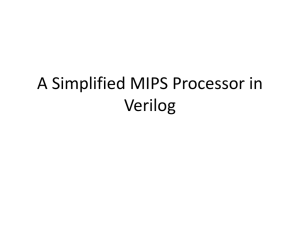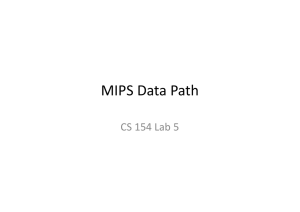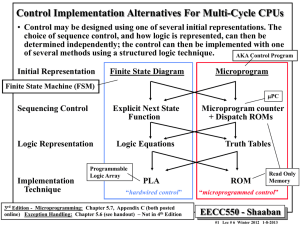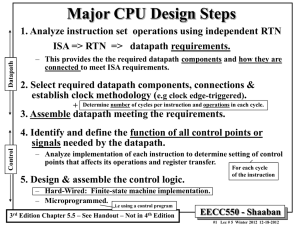CPU Architecture Why not single cycle? Why not pipelined? Why multi-cycle?
advertisement
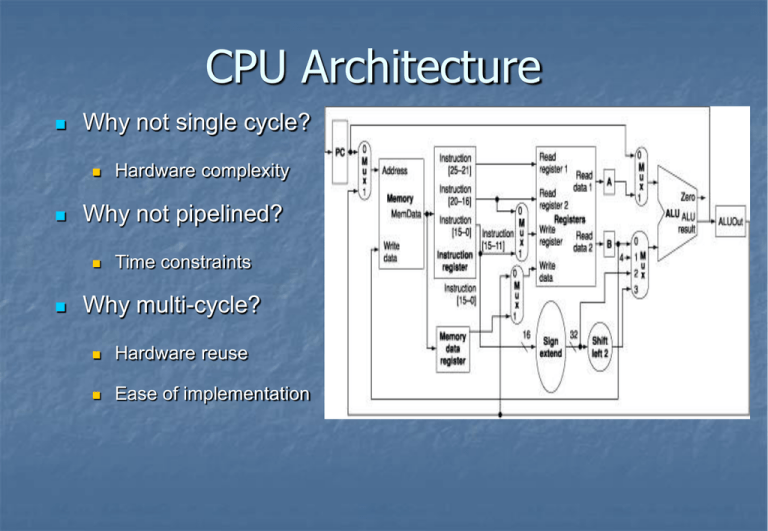
CPU Architecture Why not single cycle? Why not pipelined? Hardware complexity Time constraints Why multi-cycle? Hardware reuse Ease of implementation Instruction Formats Formats: R op rs rt I op rs rt J op rd shamt funct 16 bit address 26 bit address Address fields are not 32 bits — How do we handle this with load and store instructions? Idea behind multicycle approach We define each instruction from the ISA perspective Break it down into steps following our rule that data flows through at most one major functional unit (e.g., balance work across steps) Introduce new registers as needed (e.g, A, B, ALUOut, MDR, etc.) Finally try and pack as much work into each step (avoid unnecessary cycles) while also trying to share steps where possible (minimizes control, helps to simplify solution) Result: Our multi-cycle Implementation! Five Execution Steps Instruction Fetch Instruction Decode and Register Fetch Execution, Memory Address Computation, or Branch Completion Memory Access or R-type instruction completion Write-back step INSTRUCTIONS TAKE FROM 3 - 5 CYCLES! Step 1: Instruction Fetch Use PC to get instruction and put it in the Instruction Register. Increment the PC by 4 and put the result back in the PC. Can be described succinctly using RTL "Register-Transfer Language" IR <= Memory[PC]; PC <= PC + 4; What is the advantage of updating the PC now? Step 2: Instruction Decode and Register Fetch Read registers rs and rt in case we need them Compute the branch address in case the instruction is a branch RTL: A <= Reg[IR[25:21]]; B <= Reg[IR[20:16]]; ALUOut <= PC + (sign-extend(IR[15:0]) << 2); We aren't setting any control lines based on the instruction type (we are busy "decoding" it in our control logic) Step 3 (instruction dependent) ALU is performing one of three functions, based on instruction type Memory Reference: ALUOut <= A + sign-extend(IR[15:0]); R-type: ALUOut <= A op B; Branch: if (A==B) PC <= ALUOut; Step 4 (R-type or memory-access) Loads and stores access memory MDR <= Memory[ALUOut]; or Memory[ALUOut] <= B; R-type instructions finish Reg[IR[15:11]] <= ALUOut; The write actually takes place at the end of the cycle on the edge Step 5 (Write-back step) Reg[IR[20:16]] <= MDR; Summary: Complete Multi-Cycle Datapath Text – Fig. 5.28
